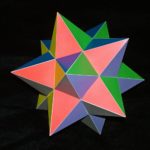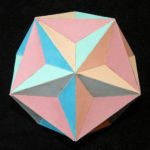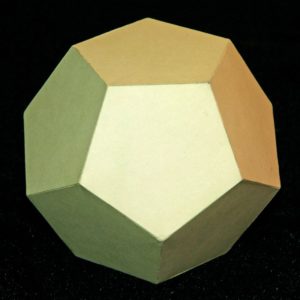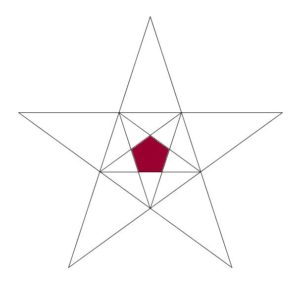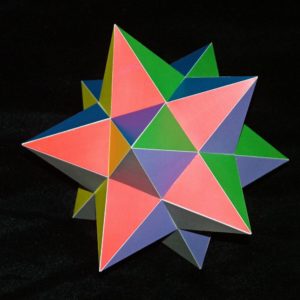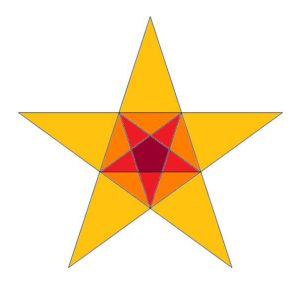In 3 dimensions with solid polyhedra, Stellation is about how the faces intersect with each other when they’re extended. Happily most of this can be analysed with 2-dimensional diagrams, though usually more complex than the ones we used for 2 dimensional stellation.
Stellations of the Dodecahedron
A dodecahedron is a good place to start. We pick one face and then map out how each of the surrounding faces intersects with it. It turns out that everything falls into a star pattern…
If we pick the cells which constitute the first stellation, we find we get our old friend the Small Stellated Dodecahedron:
The second stellation is another old friend – the Great Dodecahedron. It may seem naughty here to call this ‘stellated’ since despite its appearance it doesn’t have any star points, but viewed in terms of a stellation process it certainly fits into the sequence:
The last stellation brings us to our other old friend, the Great Stellated Dodecahedron:
These three stellations of the Dodecahedron make a beautiful progression, and they map out a fascinating link through three of the Kepler-Poinsot polyhedra we saw earlier. Back then they appeared to be a rather random collection of bright ideas, so it’s appealing to find they’re connected by a process of stellation. There are no others in the sequence: by now we’ve made the extended points as sharp as they’re going to get, and there are only ever going to be three Stellations of the Dodecahedron.
But it gets better… next is the amazing Stellations of the Icosahedron.
